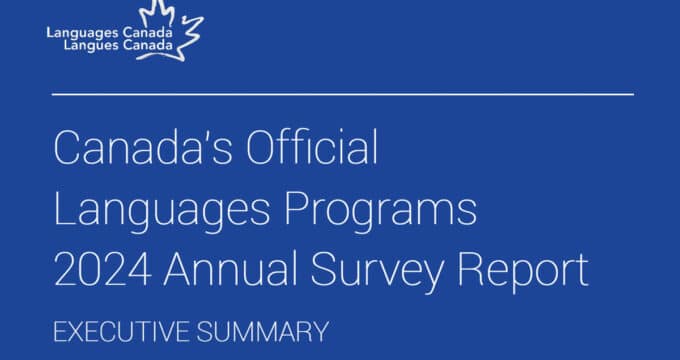Scholarships and social change in Saudi Arabia
Wearing the black face-covering veil favoured by Saudi women, Maha Mazyad looked through leaflets for prospective jobs with some of the Islamic kingdom's largest companies at a recent career fair in Riyadh. A few years ago she would have worried about the disapproving reaction of friends and parents to the notion of a young woman working in an office without family supervision, but a stint at a UK university has propelled her to seek a career.
"Now lots of girls go abroad to study and broaden their horizons. There's been a big change in attitudes among my girlfriends over about the last three years," said Mazyad, 27, from Medina, clutching a flamingo-pink handbag stuffed with job leaflets.
A recent article from ArabianBusiness.com titled "Wider world opened to Saudis studying abroad" tells the story of Mazyad, whose own way of thinking shifted after she took part in the King Abdullah Scholarship Programme (KASP). Those accepted to the programme are given a monthly stipend, and the government pays for them to take family with them. Women who receive the awards must travel with a male companion. The Saudi government invests a hefty 9 billion SAR (approximately 1.782 billion EUR) in KASP each year, and this provides full funding for 125,000 students – for both undergraduate and graduate programmes abroad. Half of these students are in the US, said James B Smith, the US ambassador to Riyadh. Saudi scholarship winners studying at colleges across the United States now form the third-largest group of foreign students, after Chinese and Indians.
Cross-cultural awareness
KASP's stated goal is to prepare Saudi nationals to replace expatriate workers in better-paid technical jobs in the kingdom, reducing unemployment. But a secondary ambition of making Saudi Arabia a more open society has always been more or less explicitly acknowledged by the authorities. Mody Alkhalaf, director of social and cultural affairs at the Saudi Cultural Mission in Washington, has explained that scholarship students were not just studying, but learning about the societies of their host countries and "breaking stereotypes and building bridges." King Abdullah wanted young Saudis "to know the world and for the world to know them," she said. They are also getting attention: when Saudi women at Marshall University in rural Huntington, West Virginia, held a session explaining why they wore headscarves, the first meeting was so crowded the organisers had to arrange repeats. Later, Muslim students staged a dormitory skit about reaction to their coverings.
"It's been really enriching for our students to be exposed to that kind of diversity," said Clark Egnor, executive director of the university's Centre for International Programmes.
"Most of our [American] students are first-generation college students, and meeting students from other countries is an important part of their education. It helps prepare them for the world they're going to live and work in."
Women in Gulf states
Dr Mona Al Munajjed pointed out in a recent article for ArabianBusiness.com that investing in women’s education has been vital to the Gulf region for social and cultural development. Access to primary, secondary, and tertiary education has grown throughout the six Gulf Cooperation Council (GCC) states of Bahrain, Kuwait, Oman, Qatar, Saudi Arabia and the United Arab Emirates. Today, girls’ enrolment in primary schools is almost 100 percent in all GCC countries, now very close to achieving the United Nations Millennium Development Goal of universal primary education by 2015. According to recent United Nations data (2011), girl’s share of primary enrolment in 2010 reached 49 percent in all GCC countries. Their share of secondary enrolment ranged as follows:
- 50 percent in Bahrain and the UAE;
- 49 percent in Kuwait and Qatar;
- 48 percent in Oman;
- 46 percent in Saudi Arabia.
In 2010, women’s share of tertiary enrolment was:
- 64 percent in Kuwait (2004),
- 63 percent in Qatar (2010),
- 60 percent in the UAE (2009),
- 52 percent in Saudi Arabia (2010),
- 50 percent in Oman (2010)
- 46 percent in Bahrain (2010).
Education is linked to labour productivity. As result of increased enrolment in secondary and higher education, as well as programmes like KASP, more women in the Gulf region have become employable and economically active by joining the labour force. Women over the age of fifteen made up 52 percent of the workforce in Qatar in 2010, 44 percent in the UAE, 43 percent in Kuwait, 39 percent in Bahrain, 28 percent in Oman and seventeen percent in Saudi Arabia.
Shifting mindsets
Reformist officials in Saudi Arabia have long accused the kingdom's education system, with its heavy emphasis on religious instruction, of teaching intolerance and failing to prepare generations of young people for the rigours of a modern economy. "It was more tolerant and liberal in the seventies than in the nineties. I think it's started to change again," said Bandar al-Showair, 29, an executive manager at a large telecom company. Showair was in the first batch of students to be sent abroad under the KASP in 2005 and did a masters in information technology in North Carolina.
"When I compare myself to those who have not studied abroad, you can see the difference," he said.
"It's not about getting the degrees, it's about getting the culture and the new ideas and new ways of life." Source: www.arabianbusiness.com
Most Recent
-
The surging demand for skills training in a rapidly changing global economy Read More
-
US issues corrected student visa data showing growth for 2024 while current trends point to an enrolment decline for 2025/26 Read More
-
Survey finds US institutions expanding agency engagement and focusing on new student markets Read More


















